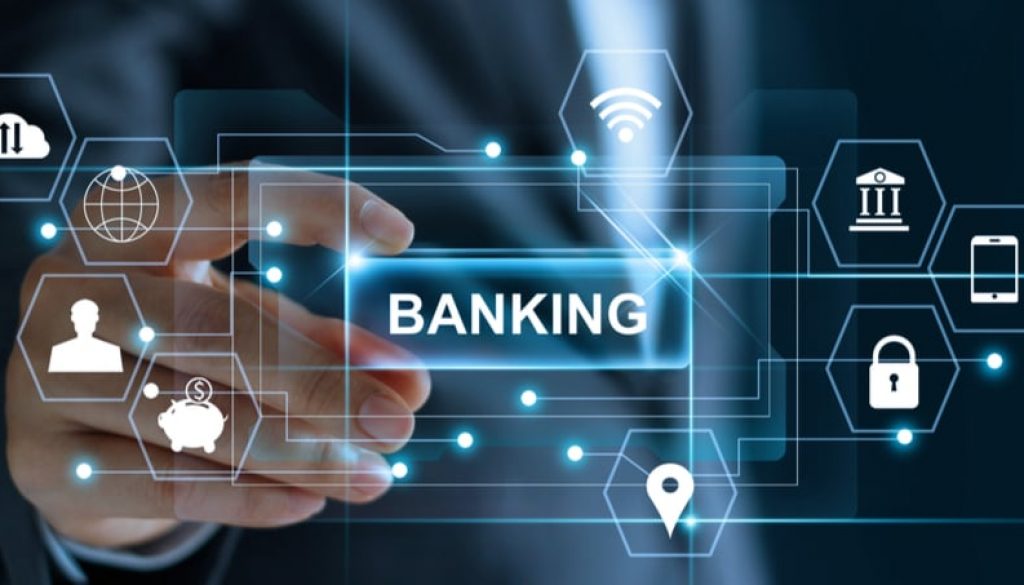Introduction
Open banking is the most disruptive event in banking for centuries. It is redefining the bank value chain, challenging the way banks interface with their customers and changing how they compete with each other. Open banking is largely about customer data whereby banks must share customer data with third parties as requested by customers. Open banking is transforming the way banks engage with their customers in global markets.
This article is a complete guide to understand open banking. It tackles briefly almost all aspects related to open banking including definition, regulations, stakeholders, evolution, strategies, technologies and innovation, opportunities and challenges, adoption around the world, ecosystem, and future outlook. The article concludes with recommendations to address challenges and rip benefit throughout the journey of transformation into open banking.
WHAT IS OPEN BANKING
Open banking, also known as “open bank data”, is a banking practice that allows third-party financial service providers open access to consumer banking, transaction, and other financial data from banks and non-bank financial institutions through the use of application programming interfaces (APIs).
Key features of open banking are:
- Allowing access and control of consumer banking and financial accounts through third-party applications.
- Reshaping the competitive landscape and consumer experience of the banking industry.
- Offering promising gains whilst entailing risks to consumers as their data is shared widely.
- Third-party service providers are typically technology start-ups and online financial service vendors.
- Customers are normally required to grant some kind of consent to let the bank allow access to their data.
- Third parties can access banking data securely and in real time using application programming interfaces (APIs).
- Financial data uses might include analysing customers’ accounts and transaction history, aggregating data across participating financial institutions and customers to create marketing profiles, or making new transactions and account changes on customers’ behalf.
- Customers have more options for managing their money, borrowing, and making payments.
REGULATIONS
Regulation is one of the key triggers for open banking in Europe. Payment Services Directive PSD2 is an EU Directive that is intended to bring more competition and innovation into the financial services sector. PSD2 requires banks to share customers’ financial data with authorized third parties via dedicated APIs. This ends banks long-standing monopoly on customer data. By ending the data monopoly, banking will become more liberal than ever before.
The Open Banking initiative came into effect on 13th January 2018. It is overseen by the Open Banking Implementation Entity (OBIE), governed by the Competitions and Market Authority (CMA), and is funded by the nine largest banks and building societies in the United Kingdom.
IMPACT ON VARIOUS STAKEHOLDERS
Open banking impacts various stakeholders in different ways as follows:
- Impact on banks: bank customer data is no longer owned by any financial institution, but by the customer, and customers are no longer tied to the packages and services offered by a single bank or provider. Competition is higher and bank services and products must be attractive to win market share.
- Impact on providers: authorised Third Party Providers TPP offer innovative new solutions that can deliver competitive advantages, and drive new revenue streams.
- Impact on customers: Open Banking is shaping the way customers’ bank account information is accessed and managed, and how they make payments. Customers have access to a greater choice of services.
EVOLUTION OF OPEN BANKS
The financial services industry witnessed various changes during the last decade. Banks transactional models evolved rapidly. Banks are now evolving into a new era of digital banking, in which competitors are not traditional financial institutions. Competition is driven by wider choices and technology. This is reshaping the structure of the financial services industry for years to come with the following trends that are here to stay:
- Customers are increasingly demanding digital solutions.
- Financial services providers continue to push the process of digitalization.
- Fintechs continue to innovate in all areas of banking.
- Regulatory pressure to open banking to third parties continues.
- New technologies continue to emerge.
Open Banking is an evolution from todays closed banking model in which the banks have sole control and possession of customer data, into an open model, in which a large number of traditional banks, new providers and Fintechs will have access to this data.
OPEN BANKING STRATEGIES
There are three effective winning open banking strategies leading to long-term avenue for growth:
First Strategy – Reinforcing the Core: Integrating third-party functionality can significantly strengthen the core bank and acquire market share from less responsive competitors. Many joint solutions of banks and third parties require little technical investment and allow banks to offer services faster than they could using traditional in-house developments.
Second Strategy – Opening New Distribution Channels: As they mature, the most successful fintechs will become powerful distributors of financial services. They leverage technology to open new distribution channels through various devices.
Third Strategy – Launching Innovative Ventures: APIs and third-party relationships can help banks build new business models that operate outside the bank’s core business. This approach might include launching new businesses devoted to a specific vertical market or product.
Figure3: Three Winning Open Banking Strategies (Source: BCG Analysis)
OPEN BANKING TECHNOLOGY INNOVATION
Open banking is a driving force of innovation in the banking industry. We hereby identify two key innovation areas:
FIRST INNOVATION AREA: API TECHNOLOGY INNOVATION
The technical concept defining the open banking paradigm is API (Application Interfaces). An API is a standardised protocol for computer programs to talk to each other and is integral to modern software development. The use of APIs range from web-based APIs, operating systems, databases, hardware, or software libraries. An API specifies the connection mechanism, the data, and functionality that are made available and what rules other pieces of software need to follow to interact with this data and functionality.
API innovation can be in:
- Data Transmission: the way the data is transmitted securely.
- Data Exchange: the format of the exchanged data.
- Data Access: access management that defines access rights, data that can be accessed, and how this data is accessed.
- API Design: the way APIs are designed.
- API Openness: The API’s level of openness to third parties.
There are various types of APIs including:
- Private APIs: are closed APIs exclusively accessible by parties within the boundaries of the organisation.
- Partner APIs: APIs that are open to selected partners based on bilateral agreements.
- Member APIs: open to everyone who is a formal member of a community with a well-defined set of membership rules.
- Acquaintance APIs: open to everyone complying with a predefined set of requirements.
- Public APIs: accessed by anyone, typically with some form of registration for identification and authentication purposes.
SECOND INNOVATION AREA: DATA DRIVEN INNOVATION
Data-driven innovation involves the innovative use of customer financial data by banks, fintechs and social media giants. Aggregation and consolidation of banking data are cornerstone of banking innovation platforms.
OPPORTUNITIES
Open banking is a key strategic component of the future of banking. Open banking offers many opportunities, these include:
- Higher transparency of financial data: Through the use of networked accounts, open banking can help lenders get a more accurate picture of a customer financial situation and risk level in order to offer them more profitable loan terms. It can also help customers in getting a more accurate picture of their own finances before taking on debt. Open banking can also help small businesses save time through online accounting and help fraud detection companies better monitor customer accounts and identify problems sooner.
- Rising Competition: Open banking will force large established banks to be more competitive with smaller and newer banks. This will result in lower costs, better technology, and better customer service. Established banks will have to do things in new ways that they are not currently set up to handle and spend money to adopt new technology. Banks can take advantage of new technologies to strengthen customer relationships and customer retention by better helping customers to manage their finances instead of simply facilitating transactions.
- Convenient access to financial data: Open banking offers benefits in the form of convenient access to financial data and services to consumers and reducing costs for financial institutions.
- Greater Innovation: Open banking has the potential stimulate greater innovation in the financial services sector and open up competition in the banking industry. It can bring change, opportunity and opens a whole new world of monetary management possibilities.
- Higher Banks Credibility: As banks look to secure their future relevance in the digital economy, open banking is becoming a key resort for establishing credibility, developing a footprint in the data economy, and creating a stepping stone towards new business models.
CHALLENGES
While open banking adoption is growing there are rising concerns around security, privacy and fraud. The main concern revolves around how banks can ensure privacy and security once the data is beyond their walls. APIs can be prone to fraud, which is a risk for consumers, banks and third-party providers. Usual cybersecurity protocols are not enough and banks need the infrastructure and capabilities in place to identify the third-party API vulnerabilities. A main concern is also data breaches due to poor security, hacking, or insider threats that are widespread today as more data is interconnected in many ways. Open banking may have the reverse effect of increased costs due to added expenses from data and network effects.
Throughout the Open Banking transformation journey, EU Banking Consultancy identified six challenges that may reduce scale and speed of open banking adoption. These include:
- Open banking development and management
- Open banking business development and modelling
- Open banking risk management
- Open banking service, support and relationship management
- Open banking business planning, budgeting and incentive schemes
- Open banking API platform capability development
ADOPTION OF OPEN BANKING
More and more countries, including Australia, Brazil and the United Arab Emirates, are now progressing with their Open Banking regulations. However, there is currently no global API standard, which leads to complexities when processing transactions between countries.
There are two main drivers for the adoption of open banking:
- The pandemic driver: The COVID-19 pandemic has accelerated the ongoing digitisation of all industries. Consumers are now demanding accessibility, speed and convenience in payments. Banks need to meet the increasing demand for online and mobile solutions, and open banking can be used as a vehicle for this.
- The technology driver: Technology companies are now beginning to work with banks more openly, simplifying and providing greater transparency in the financial-services industry, and collaborative ecosystems can help speed up the digital transformation.
In assessing open banking adoption, banks can be grouped into three clusters:
- Banks with Minimum Compliance: These are banks that do not believe in a tangible business impact from open banking regulations.
- Banks with Defence Mode On: These are banks that think that open banking negative impact is marginal and can be offset by standard defensive banking tools such as retention activities, adjusted pricing, and increased pressure on own sales units.
- Open Banks: These are banks exploring the possibilities of an open framework in which they are willing to share data and authorize third parties to access bank accounts information.
Financial institutions across the world are at various stages of their open banking capabilities. Many are still in the early phase of providing access to developer tools and smooth access to APIs, while others have succeeded in developing a sound strategy that sets up their open banking community for the long run.
INNOPAY places global banks into four quadrants throughout their open banking journey:
- Starters in opening up.
- Innovators in functionality.
- Leaders in experience.
- Masters in openness.
Efforts undertaken by banks throughout their open banking journey include:
- The development of a comprehensive API catalogue that facilitates a wide range of functionalities.
- The development of API documentation which provides information on the workings and applications of open banking APIs.
- The development of a wide open banking community and the engagement with them.
- The improvement of various links in the open banking value chain.
Figure 6. Efforts undertaken by banks throughout their open banking journey
Source: INNOPAY Open Banking Monitor Results (May 2020)
ADOPTION MODELS
Various elements for successful adoption of open banking can be identified. These include:
- roles and responsibilities
- governance and the way of working
- data and metrics
- culture
- Tools and Processes
- IT Assets
- Capital
- People and Organisation
Each bank can effectively adopt open banking by making adjustments to these elements. Moreover, banks will need to constantly review and refine their ongoing responses to changing open banking circumstances.
OPEN BANKING ECOSYSTEM
0pen banking is heavily shaped by the digital ecosystem. While regulatory changes may act as a catalyst for open banking, the growth of digital ecosystems are the primary driving force behind the open banking paradigm. According to the World Economic Forum, the digital ecosystem and platform are behind the economic transformation. An ecosystem helps in generating product and service innovations.
In open banking the digital ecosystem include customers, partners and third-party services, and regulators. A successful open banking digital ecosystem is often based on a core engine and a business model.
FUTURE PROSPECT
Open Banking is becoming a global revenue opportunity. PwC forecasts an approximate USD$10bn global revenue opportunity from open banking by 2022 when 64% of adults are expected to be adopters.
The Fintech open series forecast the following development in open banking:
- Increased investment in the infrastructure for open API access.
- Increased investment in fintechs that are looking to exploit banks customer data and create some form of value from it.
- Enhancement of digital banking channels.
- Emergence of new business models delivering a plethora of data-driven innovations.
- The banks shift from traditional services towards analysing customer data in order to provide more valuable services to customers and merchants.
- Bank will be offering services bought in from third parties. This will widen bank services.
- There will be increased consumer focus on data protection driving middleware services.
- There will be growing consumer interest in how organisations are dealing with their data.
- Fintechs and banks will work together to make the open banking infrastructure more accessible while attempting to alleviate the security threats.
- Once banks and fintechs begin working together more smoothly, there will be room for innovation.
RECOMMENDATIONS TO ADDRESS CHALLENGES AND RIP BENEFITS
Open banking entails great opportunities, but is surrounded by serious challenges that may hinder all benefits if open banking is not properly adopted. We hereby gives some recommendations to address the challenges and rip the benefits of open banking. These recommendations are endorsed by leaders in the field such as EU Open Banking Consultancy, EU Banking Hub, Fintech News, and others.
Recommendation #1 – Raising Financial Literacy for All: Only by fully understanding the new open banking dynamics, and then taking the right steps to develop an operating model, banks will be able to effectively integrate open banking in their daily operations.
Recommendation #2 – Using technologies to leverage the value of banks financial data: With the help from specialised fintechs in data processing and analysis areas latest technologies such as big data, artificial intelligence, 3D tracking, and many other technologies can be embedded in open banking APIs.
Recommendation #3 – Expanding the open banking ecosystem: An ecosystem connecting banks, merchants and consumers can help in expanding bank service offerings in partnership with third-party providers. This raises potential for new revenue streams.
Recommendation #4 – Building a compelling digital banking experience: Most banks are moving forward with an API development strategy to introduce innovative personalised digital banking solutions. API platforms can add granular and enriched access to data, ranging from standing orders to demographic data and market data analytics.
Recommendation #5 – Offering real-time market intelligence from aggregated consumer data analytics to SME customers: Analytics that can be offered to SMEs include real-time market share tracking against competitors, retail shopping data, cross-competitor spend profile analysis and demographic segmentation.
Recommendation #6 – Fully embracing open banking: Most retail banks assert that they are open to adopt open banking. However others are forced towards openness. Fintech innovation is driving the trend. Some banks are still stuck in compliance with regulations and in entering in partnerships with third parties. Banks should recognize that creating an open-banking ecosystem creates tremendous opportunities for improving the overall customer experience and that third-party partnerships will be a source of competitive advantage.
Recommendation #7 – Getting the open banking model right: APIs are at the heart of open banking. They can help in increasing innovation, fostering collaboration, extending customer reach and lowering costs compared to existing legacy systems. To succeed with an open banking strategy banks should develop the right open banking model.
Recommendation #8 – Developing an API strategy: For banks considering opening their infrastructure, an API strategy should be considered a business strategy, not an IT strategy. Free API access may be stepping-stone for both direct and indirect business models.
Recommendation #9 – Establishing added value partnerships with Fintechs: Fintechs are seeking bank partners to provide core financial infrastructure for new products and services. This could benefit banks in generating new revenue streams.
Recommendation # 10- Adopting Banking as a Service: For many banks, the idea of becoming a wholesale provider of commodity utilities is considered a worst-case scenario. To provide Banking as a Service, banks and fintechs have to collaborate to deliver products and services that often require a banking license.
Recommendation # 11 – Adopting openness at the core: Legacy core banking systems are often the key obstacles. These systems are closed and monolithic by nature, while open banking requires openness and real-time processing. Banks are building their core banking solutions on a blockchain-style technology that can be used for interfacing with open banks.
REFERENCES
World Economic Forum; INNOPAY; Next Generation Banking; FIS; EU Banking Hub; EU Consultancy on Open Banking; Fintech Open Series; Meniga; Investopedia; Al Riyadh Daily; PwC network; Pay Direct; FinTech Futures; Wikipedia; Open Banking Article by Alejandro González, Bela Virag, Juan González, Gerald Hessenberger, Rocío Castedo, Mateo Jiménez; Open Banking Article by Thorsten Brackert, Stefan Dab, Steven Alexander Kok, and Maarten Peeters



